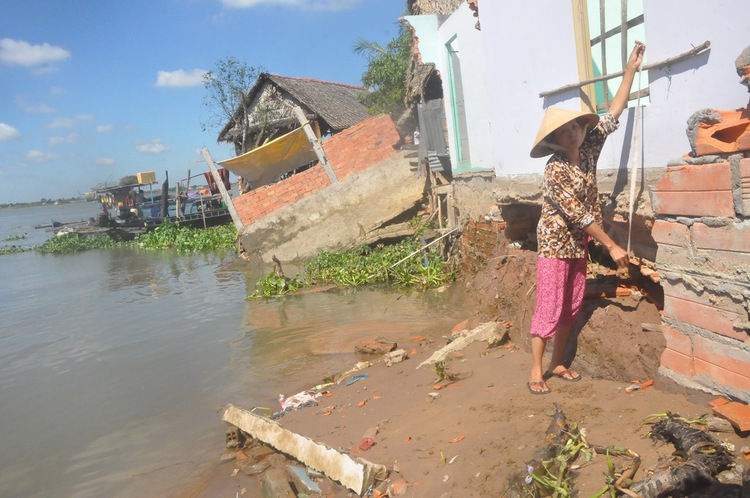
Vietnamese scientists have warned of the unusual increase in the depth of two major rivers in the Mekong Delta, with sand mining and hydropower dams said to be the cause.
According to experts, instead of being accreted, the 250-kilometer long Tien (Front) River and 200-kilometer Hau (Back) River have become five to seven meters deeper since 2008.
The Mekong separates in Phnom Penh into the Tien River, the main northern branch, and the Hau River, the primary southern distributor, after entering Vietnam.
Leaders of the Truong Phat Company based in Tien Giang Province have submitted a letter to the Ministry of Transport, asking for the temporary cessation of sand exploitation in a 40-kilometer section of the Tien River.
Against the backdrop of new record depths of the river, a continuation of dredging activity would cause serious subsidence, Tran Duy Phuong, director of the firm, explained.
Only 12,000 cubic meters of sand was collected from a 10-kilomter section of the river during a four-month operation, Phuong said, adding that he had ordered his employees to stop the activity due to the strange phenomenon.
“Prior calculation indicated that about 1.5 million cubic meters of sand would be accumulated from the river area. Some locations were up to 16 or 17 meters deep,” the director elaborated.
According to Hoang Van Hung, an official of the Vietnam Inland Waterways Administration, the situation is present along the entire length of the Tien and Hau Rivers.

This map indicates the increase in depth of several sections of the Tien and Hau Rivers between 2008 and 2016. Photo: Tuoi Tre
The cause
Nguyen Huu Thien, an independent expert on the Mekong Delta’s ecology, listed two primary reasons behind the phenomenon, including excessive sand exploitation along the rivers and the negative impact of hydroelectric dams at the Mekong River upstream.
Between 1998 and 2008, the Tien and Hau Rivers lost a total of 90 million and 110 million metric tons of bottom material, respectively, Thien said, quoting the findings of a study by international scientists.
The hike in exploitation in the following years created several large holes, some up to 45 meters deep, causing natural accretion material to be stored inside them, the expert continued.
Following his survey on the environmental impact of hydroelectric dams along the Mekong Delta in 2010, under the authorization of the Mekong River Commission, Thien pointed out that such structures in China had shrunk the amount of alluvial sand by 50 percent.
Thien expected that 100 percent of bottom matter would not be able to flow into Vietnam’s Mekong Delta once 11 hydroelectric projects along the Mekong River in Laos and Cambodia are launched.
He also mentioned the contribution of exploiting water resources.
According to Le Manh Hung, deputy chief of the Water Resource Directorate, the current collection of sand from the river bottoms does not consider the sustainability of waterways.
“With such a large volume of exploitation, all sand resources in the Tien and Hau Rivers would run out in less than 30 years, posing inevitable consequences,” Hung asserted.
Huynh Men Van, an official from the Department of Natural Resources and Environment in Ben Tre Province, accretion has been slow and even absent from some parts of the two rivers.
This goes against the law of nature, she said.
Like us on Facebook or follow us on Twitter to get the latest news about Vietnam!


Max: 1500 characters
There are no comments yet. Be the first to comment.